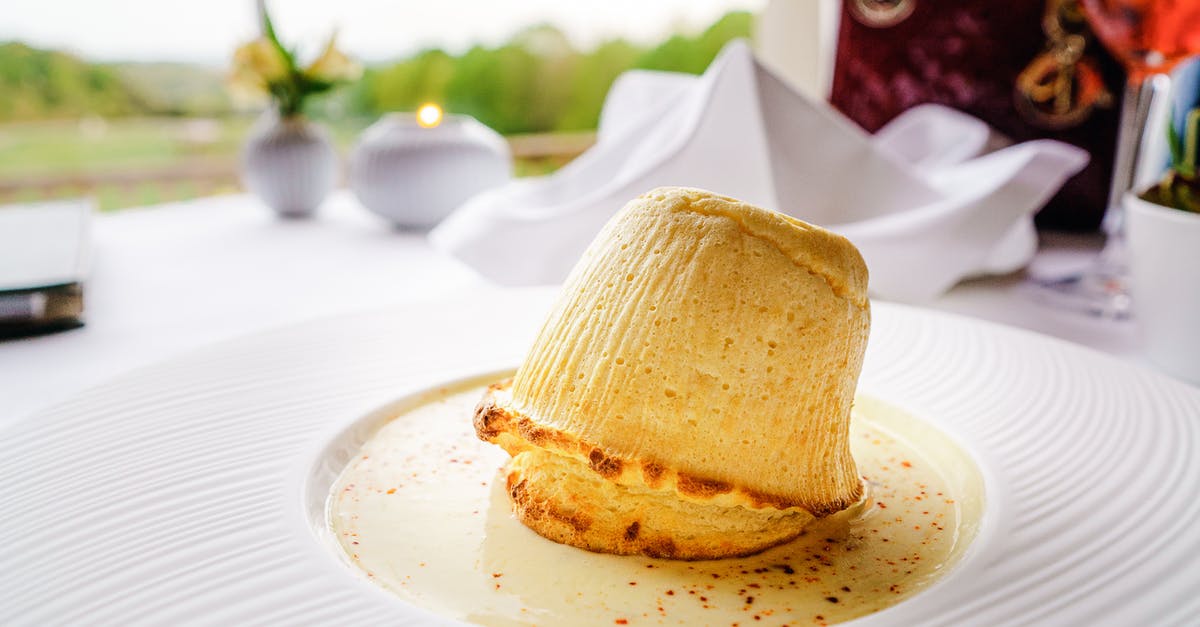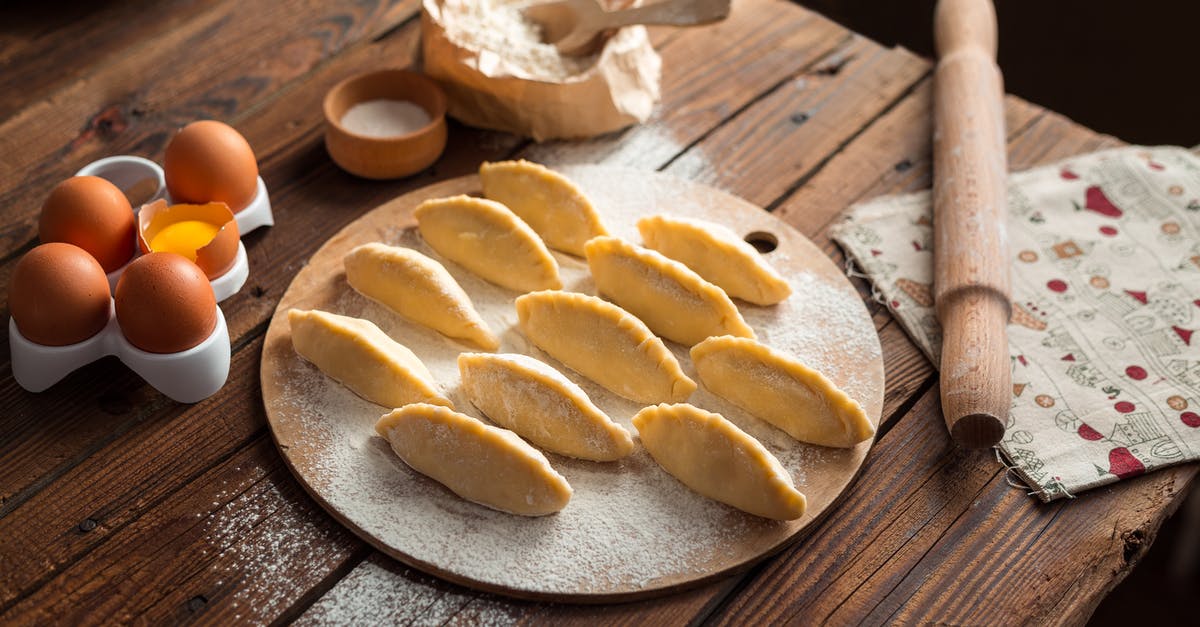Beating Egg Whites with Granulated Sugar Added for Tapioca Pudding

I've been making tapioca pudding from a recipe that calls for 2 egg whites to be beaten with 1/2c of sugar until soft peaks form. Out of quite a few tries for many minutes, the eggs will never get beyond a thick creamy stage (around the consistency of a soft yogurt).
Is it possible to get to the soft peaks stage with that much granulated sugar mixed with the eggs? Is there some trick I should try to make it work properly?
If not, might it work to replace the sugar with a corresponding amount of powdered sugar? - presumably this would give it more structure (corn starch) and less weight to support (smaller sugar granules).
The recipe I'm using is here: http://www.bobsredmill.com/recipes_detail.php?rid=858
Best Answer
You can replace the granulated sugar with confectioner's sugar, but due to that starch, you'll end up with an icing-like consistency. In fact, royal icing is just egg whites and confectioner's sugar.
There is actually a surprisingly large number of variables when it comes to beating egg whites, with the amount and type of sugar being just one of them. I'm not sure if this is going to be a complete list, but here's the basics of what you need to know for beating up to the "stiff peak" stage (and if you want soft peaks, then just don't beat for as long):
Age of eggs. Older eggs will whip faster and to a greater volume, but will be less stable (i.e. will deflate faster). Most people seem to find they get the best results with eggs that are about 3 days old. Very fresh eggs are difficult to whip, and very old eggs (more than 1-2 weeks) are just too unstable to work with.
Temperature. You want to separate the eggs when cold, because the whites are firmer and it will be easier for you to cleanly separate the yolks from the whites. But you always want to allow the whites themselves to come up to room temperature before you start beating them, for the exact opposite reason - the proteins are less firm, more stretchy, and will more readily accept air.
Impurities (especially fat). Make sure you don't have any impurities. Use a clean, dry mixing bowl and whisk. Don't let any of the yolk get in; even a trace amount will significantly decrease the amount of air you can incorporate, and if you happen to contaminate the whites this way, it's probably better just to start over.
Salt and acid both help egg whites to coagulate, which you might remember if you've ever had to poach them. That has a stabilizing effect which will allow you to whip the eggs longer and firmer without blowing a hole in the web of proteins, and will also help to prevent (or at least slow down) the foam/meringue from deflating afterward. You don't need more than a pinch of salt, and the traditional amount of acid is either 1/8 tsp cream of tartar (preferred) or 1/4 tsp lemon juice or vinegar. You'll want to start adding these early, as soon as you see the egg whites starting to foam.
Finally, sugar is critical to attain the stiffest peaks, but it is critical that you do not add it too early or too quickly! Sugar serves a similar role here as it does in baking; it dissolves in the water, absorbing it and drawing it away from the proteins, which improves stability a lot. But this particular type of stabilization is a double-edged sword; if you add it too early, it will interfere with the coagulation process and it will take forever to beat them to peaks. And if you dump in all the sugar at once, it will just deflate the foam you've worked so hard to produce (and possibly break it, requiring you to start all over again with new eggs).
In general, you want to add the sugar right after you see soft peaks beginning to form, and incorporate it very gradually while beating. If you want the final result to be soft peaks instead of stiff peaks (which you do, in this case), you can add the sugar slightly early, but err on the side of caution here. Stiffer peaks won't harm your pudding that much, but no peaks definitely will. I also suggest using superfine sugar, because the finer the granules, the quicker they will dissolve; but don't use icing sugar unless you want icing.
Finally, don't over-beat the whites. As I alluded to above in the salt/acid section, the beating process involves stretching the proteins and incorporating air; incorporate too much air and you'll just break the proteins, and then you'll have to throw the eggs out and start all over again. This is especially easy to do accidentally if you use cold eggs.
If you keep all of these things in mind then you can whip the eggs all the way to a nice stiff meringue; soft peaks should be a piece of cake.
Pictures about "Beating Egg Whites with Granulated Sugar Added for Tapioca Pudding"



Can you whip egg whites with granulated sugar?
This sugary syrup film prevents the proteins from drying out and tightening up too fast. Once you add sugar, you can beat the egg whites without worrying too much about their getting lumpy or overbeaten. But at the same time, sugar dramatically increases the beating time required to get good volume.How do you thicken sugar and egg whites?
Fixing runny meringue is usually as simple as whisking more air into the mixture and waiting for it to develop stiff peaks. You can also add another egg white or a teaspoon of cornstarch to get the mix to the consistency you need.What are four tips for beating egg whites?
How to Beat Egg Whites\u200bWhat is used for beating egg white?
A balloon whip or large wire whisk may be used to beat the egg whites by hand. It is extremely important that the bowl and whisk be very clean and dry and that no trace of oil is present.How To Whip Egg Whites Correctly
Sources: Stack Exchange - This article follows the attribution requirements of Stack Exchange and is licensed under CC BY-SA 3.0.
Images: Eren Li, Sebastian Coman Photography, Pixabay, Pixabay
